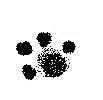Medicina naturale: circolazione difficile

Parola della Dottoressa Ornella Pancolini!
Uno dei disturbi più diffusi in ambito circolatorio nei paesi industrializzati è rappresentato dalle vene varicose e dalle teleangectasie. Nel primo caso le vene, in particolare quelle degli arti inferiori, vanno incontro ad un processo di indebolimento che compromette l’elasticità della parete o ad una degenerazione delle valvole che ne regolano il funzionamento; ne conseguono disturbi quali pesantezza, gonfiore nonché la comparsa di inestetici cordoni tortuosi visibili spesso sotto la pelle. Le teleangectasie sono invece quelle antipatiche reti capillari che compaiono nella zona delle coscie, ma anche intorno alla caviglia e posteriormente al ginocchio spesso dopo una gravidanza.
Le vene varicose possono andare incontro a processi infiammatori con la comparsa di tromboflebiti situazioni in cui si forma un coagulo di sangue all’interno della vena; il rischio maggiore legato alla tromboflebite è che si verifichi il distacco di una parte o di tutto il coagulo dando luogo alla formazione di un embolo che, libero di muoversi nella corrente circolatoria, può determinare l’ostruzione di arterie con conseguenze anche molto gravi.
La medicina naturale offre una serie di indicazioni e rimedi per queste patologie.
Idroterapia: docce o pediluvi con acqua fredda stimolano la vasocostrizione e la tonicità della parete delle vene e quindi alleviano la sintomatologia.
Omeopatia: numerosi sono i rimedi omeopatici quali Amamelide, Aesculus, Vipera Redi che agiscono a diversi livelli in abito venoso.
Fitoterapia: Frutti rossi, grano saraceno, peperoncino, aglio, zenzero, cipolla, ananas, centella asiatica, rusco, ippocastano, vite rossa sono solo alcuni dei rimedi che vengono usati con successo nel trattamento dei disturbi venosi.
Per quanto riguarda le complicanze tromboflebitiche è stato anche proposto l’utilizzo della sanguisuga (Hirudo Medicinalis) verme della classe degli Anellidi che produce sostanze anticoagulanti e antiinfiammatorie che vengono iniettate nel soggetto trattato al momento del morso; non esistono però studi eseguiti seriamente in questo ambito e quindi segnalo la tecnica solo per completezza.
E’ importante ricordare comunque che anche la medicina naturale deve essere “utilizzata” in modo mirato e quindi sempre con il controllo di un medico esperto che sappia scegliere il rimedio adatto al disturbo da trattare.
 Al prossimo tema: se volete suggerire argomenti da trattare, domande mai poste o altro, dal punto di vista della medicina naturale scrivetici a info@lefelicitapossibili.com. Rispondiamo a tutti!!
Al prossimo tema: se volete suggerire argomenti da trattare, domande mai poste o altro, dal punto di vista della medicina naturale scrivetici a info@lefelicitapossibili.com. Rispondiamo a tutti!!
___________________________________________________________________________________________________
English Version
Word of Dr. Ornella Pancolini!
One of the most common in the circulatory disturbances in the industrialized countries is represented by varicose veins and spider veins. In the first case the veins, in particular those of the lower limbs, undergo a process of weakening that impairs the elasticity of the wall or to a degeneration of the valves that regulate their operation; ensuing disorders such as heaviness, swelling and the appearance of unsightly cords winding often visible under the skin. Telangiectasias are those nasty capillary networks that appear in the area of the thighs, but also around the ankle and behind the knee often after a pregnancy.
Varicose veins may undergo inflammatory processes with the appearance of thrombophlebitis situations in which is formed a blood clot inside the vein; the greatest risk linked to thrombophlebitis is occurring the detachment of a part or all of the clot giving rise to the formation of an embolus that, free to move in the current circulatory, can lead to obstruction of arteries with consequences also very serious.
Natural medicine offers a series of suggestions and remedies for these diseases.
Hydrotherapy: foot baths or showers with cold water stimulates vasoconstriction and the tone of the wall of the veins and thus relieve the symptoms.
Homeopathy: there are many homeopathic remedies such as Hamamelis, Aesculus, Vipera Redi that act at different levels in venous dress.
Phytotherapy: Red fruits, buckwheat, chilli, garlic, ginger, onion, pineapple, gotu kola, butcher’s broom, horse chestnut, red vine are just some of the remedies that are used successfully in the treatment of venous disorders.
Concerning the complications of tromboflebitis it has been also proposed the use of leech (Hirudo medicinalis) worm of the class of Annelids that produces anticoagulants and anti-inflammatory substances that are injected in the subject being treated at the time of the bite; not exist, however, seriously studies carried out in this area and then to mark the technique only for completeness.
It ‘important to remember, however, that natural medicine is to be “used” in a targeted and therefore always under the supervision of an experienced doctor who knows how to choose the appropriate remedy to the condition being treated.
 At the next subject: If you want to suggest topics, questions never asked or whatever you wish to see from the point of view of natural medicine write to info@lefelicitapossibili.com. We answer to everyone!
At the next subject: If you want to suggest topics, questions never asked or whatever you wish to see from the point of view of natural medicine write to info@lefelicitapossibili.com. We answer to everyone!

